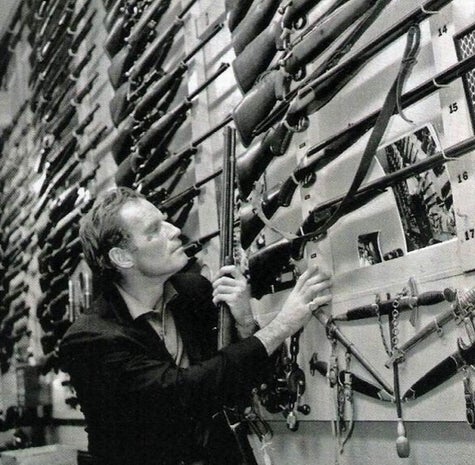WeaponsMan raises the question of how many guns are best to regularly train with – examining both “the man with one gun” and Burt Gummer extremes. His conclusion is that training is best done with one gun at a time, with the exception of advanced training, like weapons transitions. Further, and more obviously, the weapons you’re most likely to need to use should get priority over the ones you’re not, and the weapons (.22s and airguns being his examples) which help develop and maintain skills applicable to all guns priority over those:
There is one gun that is most important. It is the one you carry regularly, whether it’s a holstered revolver or a slung carbine. It is the one that will almost certainly be with you when you need to shoot (a deer, a jihadi, a Wealth Redistribution Specialist, whoever’s on your menu). It’s true that this gun should be the focus of your training and you should be able to put it into action and in a safe condition, fire accurately as the sights allow, point fire it at close-in targets in pitch black or otherwise without sights (an often neglected skill, but guess where most gunfights take place?), reload it eyes-off (because your eyes will be on the target, or visibility will be restricted), and reduce probable, and possible, stoppages, again, without relying on your vision. That’s a lot to master!
You should conduct most of your training with the gun you are most likely to use, because that is where most of your proficiency should be.
But this does not mean you should neglect training with other firearms, your own, your potential enemies’, common weapons and ones with unusual features. Nothing is quite so sad as seeing a recent-grad 18B stumped by one of the WWII or Cold War weapons that are no longer covered in training and have unusual controls. We sent one guy searching a Vz26 submachine gun for the selector switch in 2007, and we think he’s still looking, because he’s the sort of guy who would only crack a book under extreme duress. (The trigger acts as the selector and enables both semi and auto fire). In a perfect world you’d train with all that stuff, but not more than your main gun. At a dance, you always pay most attention to your own date, right?
It’s always been a bugbear for me that I greatly prefer (and am greatly more proficient at) shooting rifles to handguns, but am far more likely to need to use the former. Often, I have to leave my beloved long arms at home just to get a decent practice session in with the Glock. “Oh I’ll shoot the Glock; I need to” I’ll say while packing up my AR-15 and Enfield; and then of course before I know it I’m short on rifle ammo and it’s getting close to dinner time, and the pistol hasn’t left it’s case.
What guns should you practice with more? Do you practice with too many guns, or too few? Do you dry-fire with all your guns, a few, or only one?
 Your Privacy Choices
Your Privacy Choices
